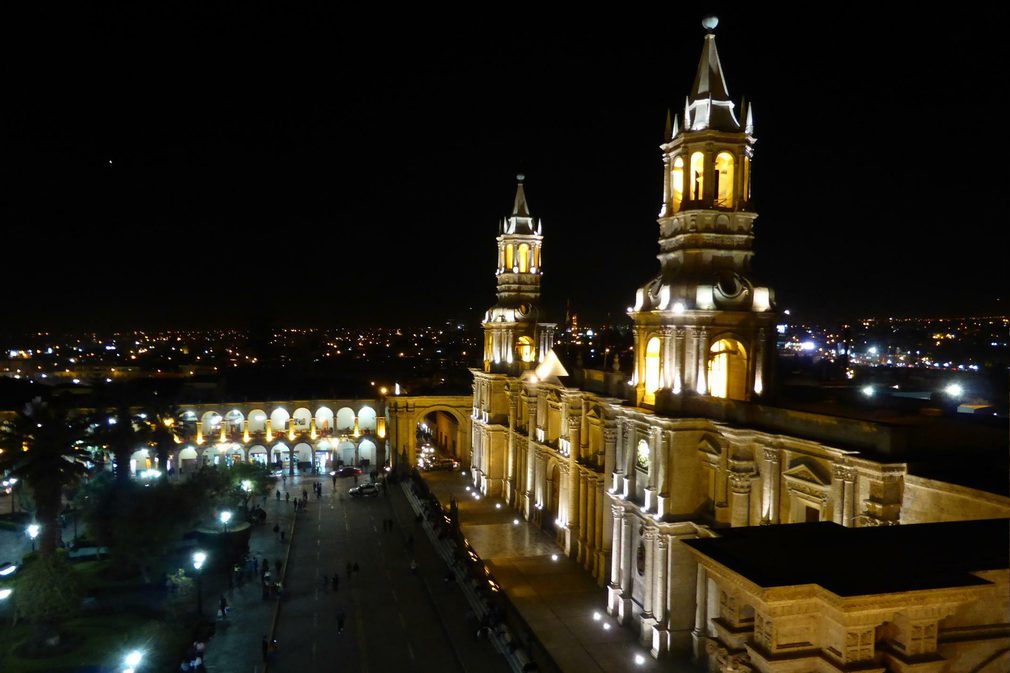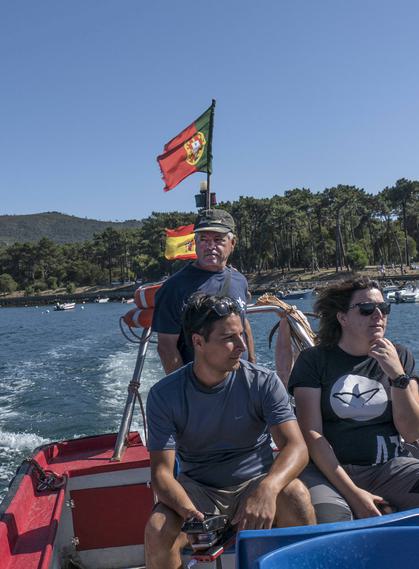New Year's Eve rituals in Spain and Latin America

The last night of the year is magical. It is one of the very few holidays that is marked in nearly every country in the world. Countries tend to have their own unique, sometimes shared, often offbeat traditions to attract prosperity and good luck for the next 365 days.
Here we select some of the most famous and quirky rituals to welcome the new year in Spain and Latin America.
Certainly the most famous one from Spain (and followed by most Latin America countries today) is the tradition of eating the 12 grapes at the stroke of midnight, in order to bring good fortune for all 12 months of the upcoming year. You need to put one grape in your mouth between each strike of the bell ' you also need to have swallowed all your grapes by the last chime so no hamster cheek cheating allowed!
Still in Spain (and some Latin America countries), both men and women will usually wear red underwear if they're looking for love, yellow ones if they are seeking fortune.
In Mexico, people sweep the house from the inside out. This ritual is intended to clean the house of impurity of all kinds.
In Peru and Honduras a nice, although somewhat harsh, way to do away with negative events from the previous year is to purify items with fire. That's a nice way of saying that you burn things (often furniture or clothes).
In Ecuador people will also burn special dolls called 'Monigotes' or 'Años Viejos' (Old Years) made of old newspapers, clothes, straw and other materials. They are symbols of people and events from the passing year and are burned at midnight to says goodbye to the old year and welcome the new one.
In Colombia, they do the same but also write down negative events they had during the year on slips of paper and place them in dolls before setting them on fire. Colombians will also place wheat sheaths around their houses as a symbol of protection, prosperity and good luck.
While Colombians choose to put lentils in their pockets, in Chile they prefer to eat them during in the first hour of the new year to encourage prosperity. A quick glance at the GDP figures tell you that the Chilean method is more effective so get eating those lentils!
Still in Chile, even more randomly, just before midnight you might crack an egg into a glass of water. The next day you come down to interpret its shape: it could be a baby, a wedding, money or any imminent change in your life ahead. All expressed in a watery egg.
If you are in Costa Rica during New Year's Eve, look for 'Santa Lucia', a small purple wildflower that brings luck. Put it into your wallet and you won't lack money throughout the year. Feel free to book a holiday with us to Costa Rica for late December, you can always pay it back when you find a Santa Lucia.
In Ecuador, people ask for fortune by throwing coins into the air in order that 'no escampe en todo el año' (it doesn't stop raining (money) throughout the year). As if this wasn't enough, they also keep high-value banknotes in their shoes. Quite sensible as throwing high value notes into the air is a sure fire way to lose a lot money quickly.
On San Silvestre day, Uruguayans choose to throw diaries and calendars of the old year out of the window - leaving streets around business centres almost entirely covered.
Still on the subject of throwing things out of windows, Cubans traditionally throw a bucketful of water out into the street at midnight as a kind of exorcism. The bad things from the year gone by are expelled letting in the good things that the New Year may bring. Obviously it pays to be careful walking the streets of Havana at midnight on 31st December.
In Venezuela, just before eating the 12 grapes, friends and families exchange and eat 'hallaca' a hand-made stuffed corn bun filled with different meats and fruits. It is supposed reinforce friendship and herald good luck for the coming year.
In Brazil, people used to celebrate New Year's eve on the coast by dressing up in white and jumping into the sea, leaping over seven waves for luck. In Rio de Janeiro, January 1 coincides with 'Iemanjá' day, the sea goddess from Yoruba religion of which they give flower offerings to ask for favours: white gladiolis for peace, red ones for love and yellow ones for money.
Finally, in most Latin America countries walking or running out of the house with a suitcase into the streets during New Year's Eve is not uncommon. It's much better if you slam the door when leaving home, in order to dispel the evil spirits. This ritual is supposed to bring you many trips for the new year.
Please note that leaving your house, slamming the door and running off down the street with a suitcase at midnight is likely to be misinterpreted here in the UK so treat that one with caution.
Get in touch Subscribe to The Pothole
The Pothole is Pura Aventura's popular monthly email. We share what we love, what interests us and what we find challenging. And we don't Photoshop out the bits everyone else does. We like to think our considered opinions provide food for thought, and will sometimes put a smile on your face. They've even been known to make people cry. You can click here to subscribe and, naturally, unsubscribe at any time.
The Pothole is Pura Aventura's popular monthly email. We share what we love, what interests us and what we find challenging. And we don't Photoshop out the bits everyone else does. We like to think our considered opinions provide food for thought, and will sometimes put a smile on your face. They've even been known to make people cry. You can click here to subscribe and, naturally, unsubscribe at any time.







 By
By